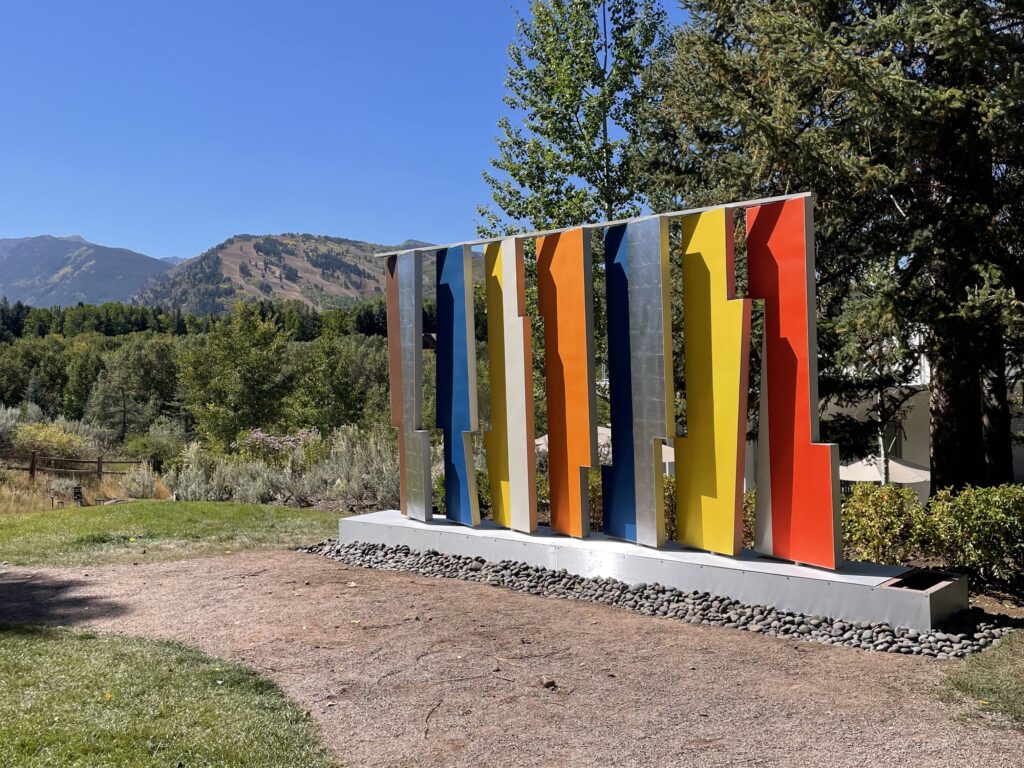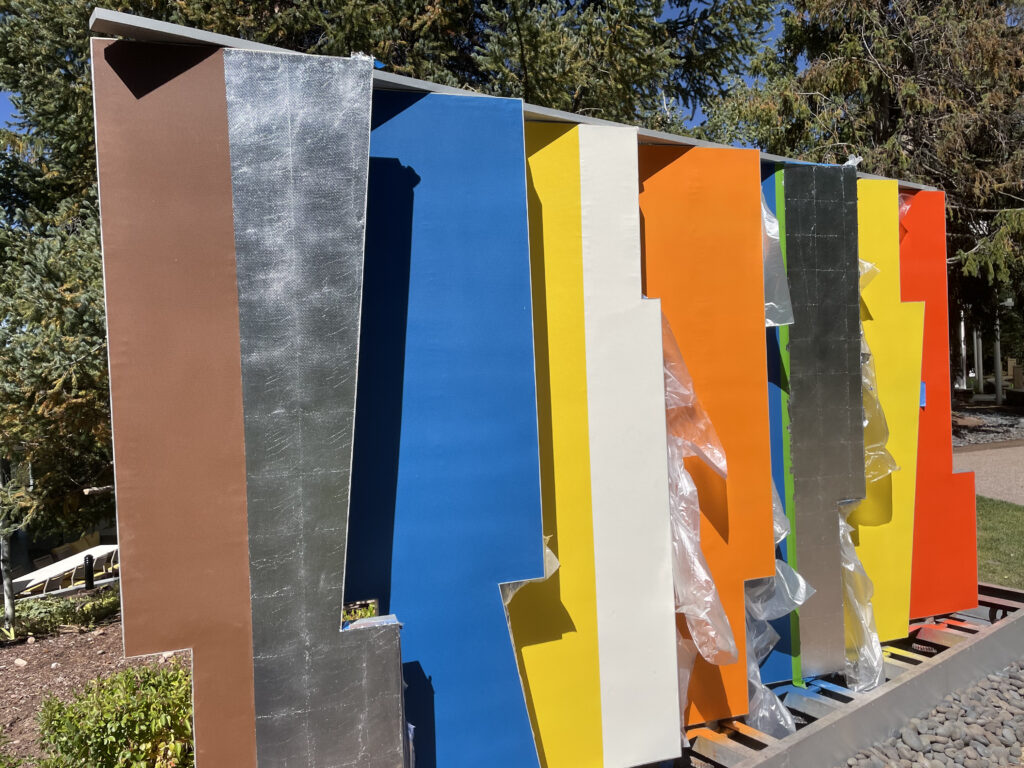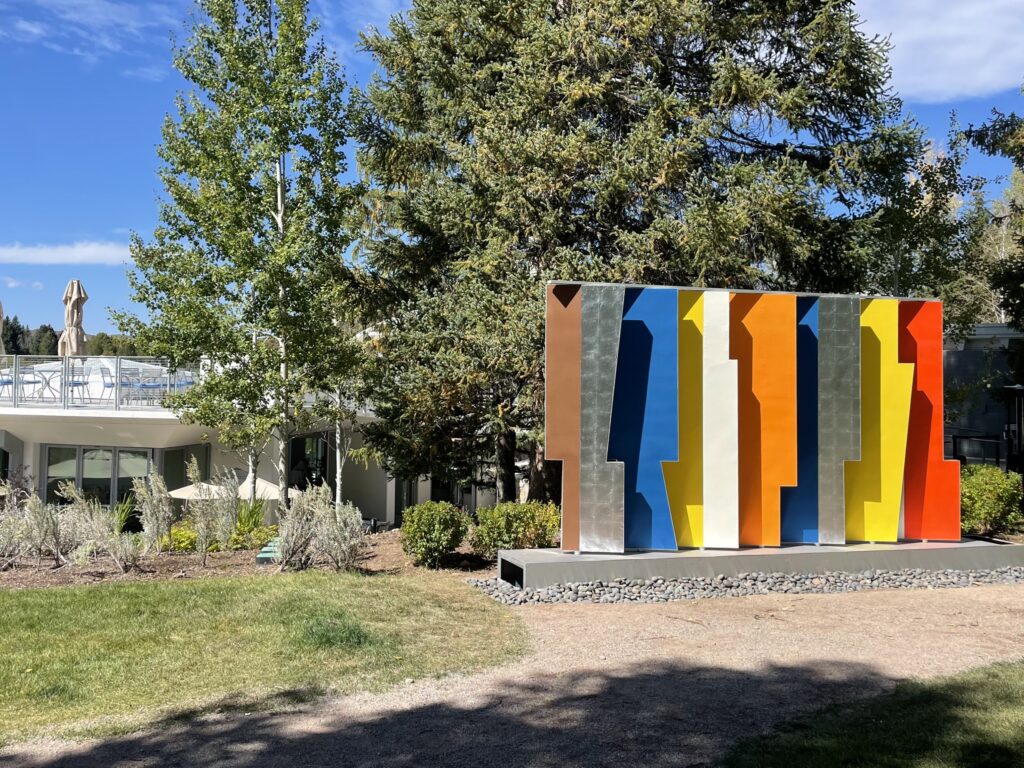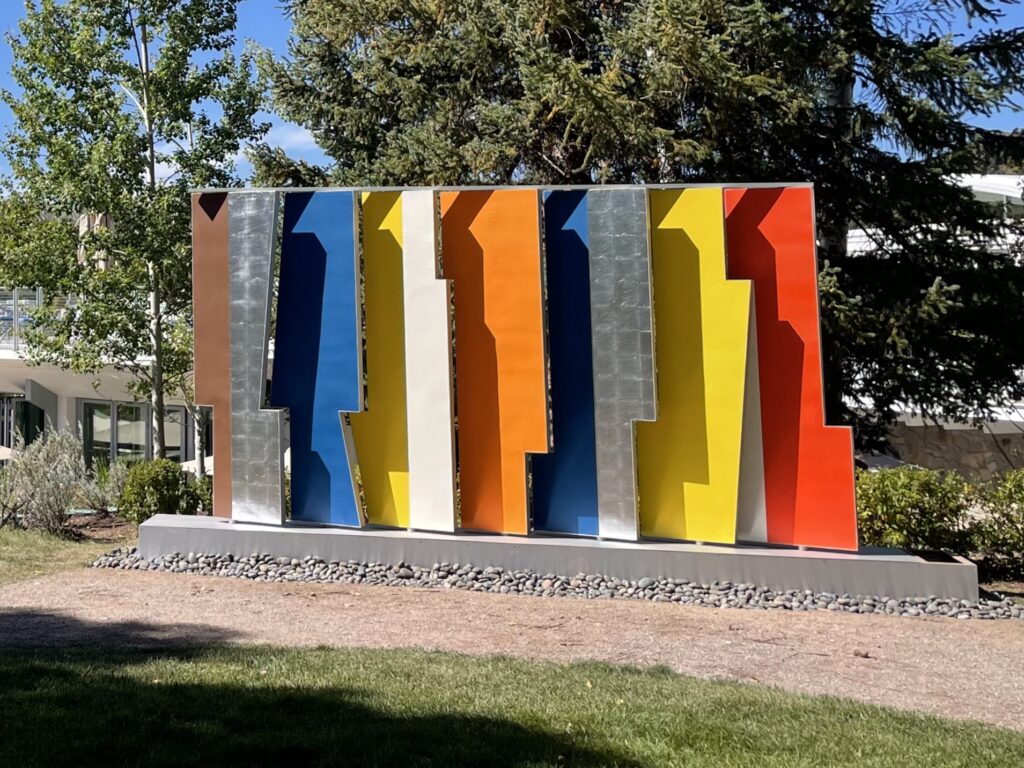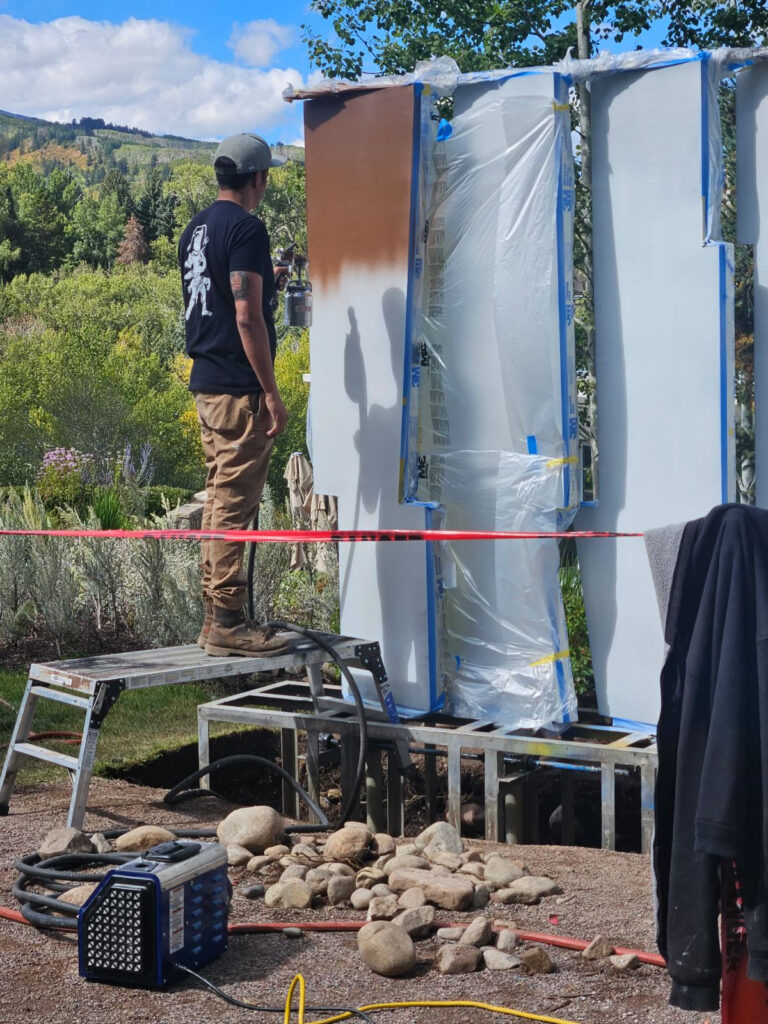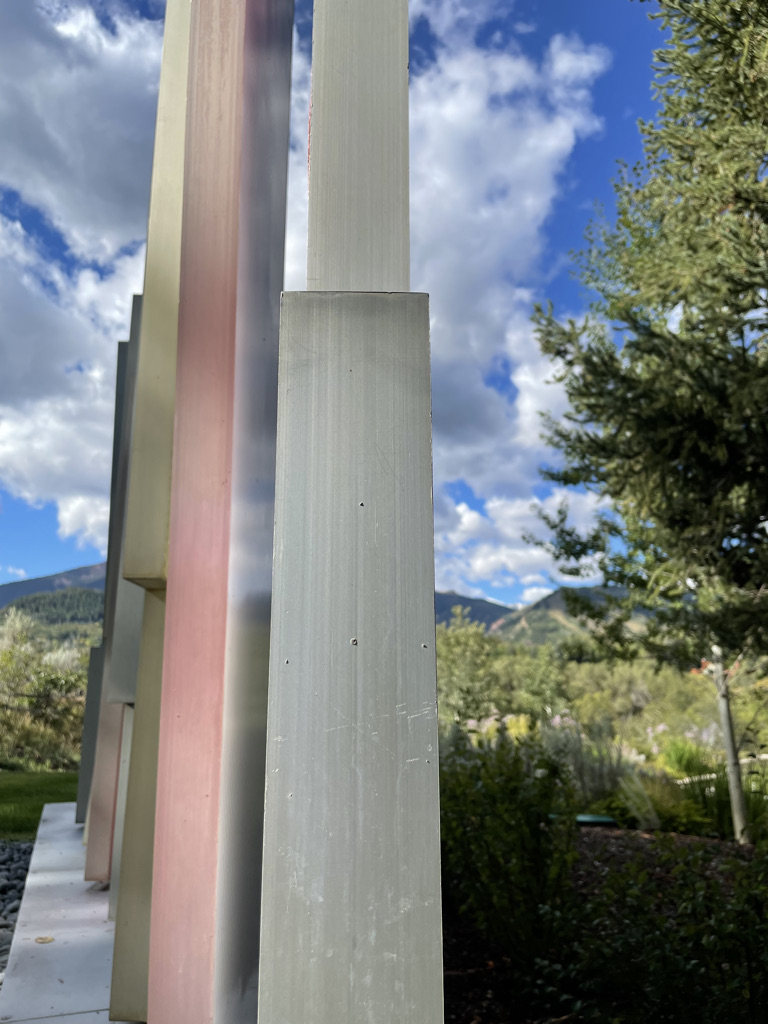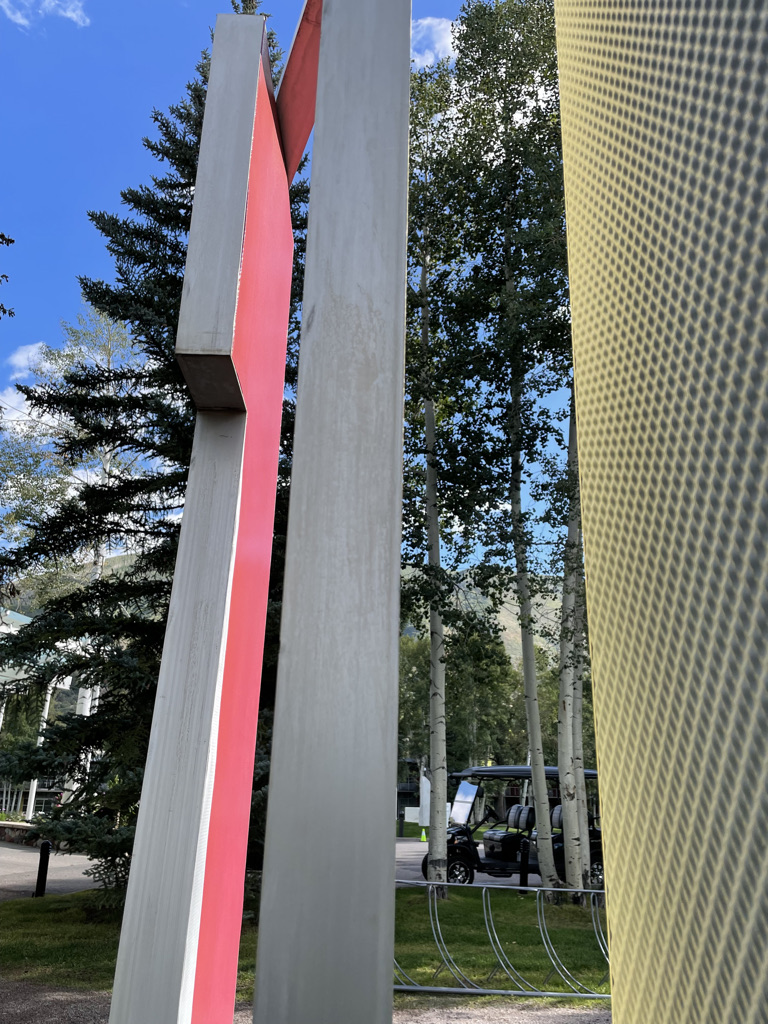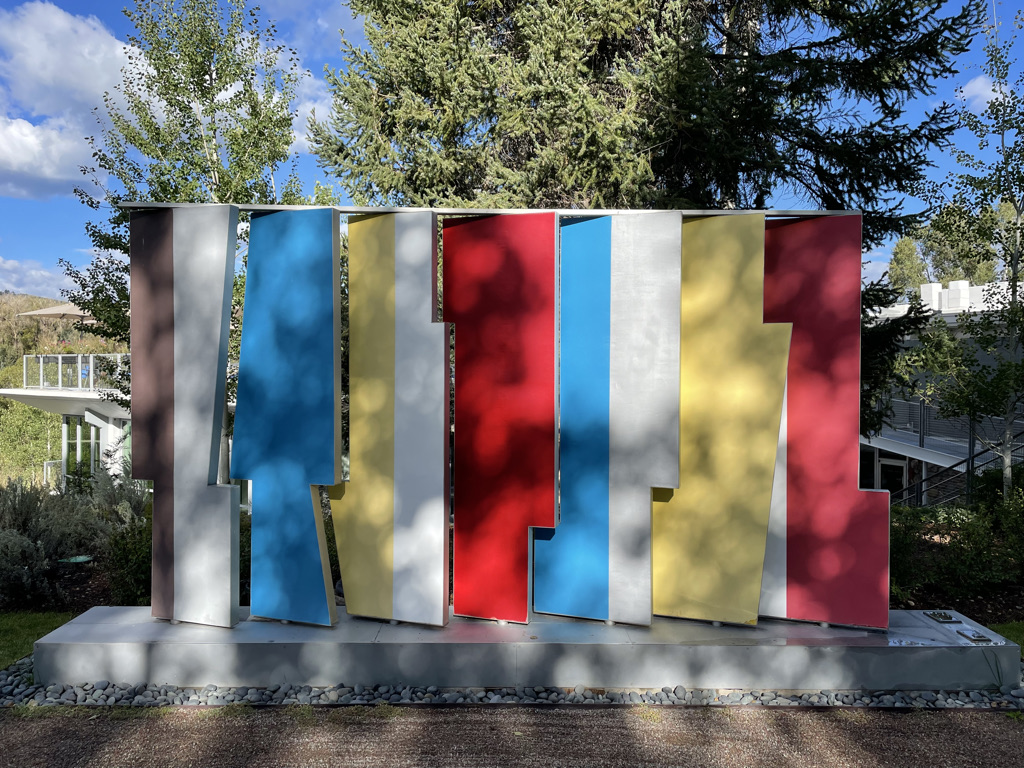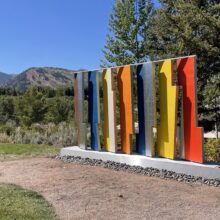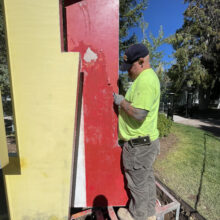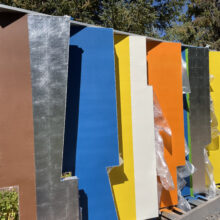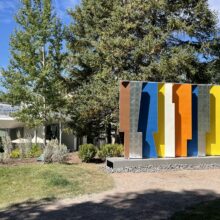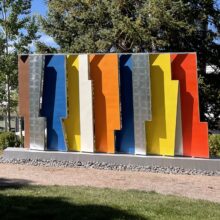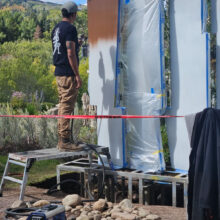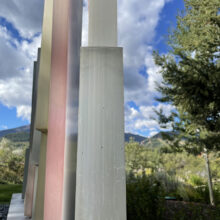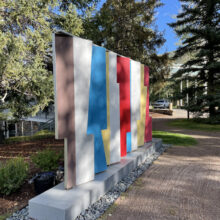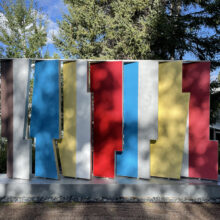Kaleidoscreen Sculpture
Originally installed near the swimming pool at the Aspen Institute campus, Kaleidoscreen is seven-foot tall and twelve-foot-wide rotatable sculpture created to provide sunbathers shade and to protection from the sun and wind. It was created in 1957 by Bauhaus artist Herbert Bayer in partnership with ALCOA, an American aluminum company, as part of an experiment for the usage of aluminum in modern art and architecture. After moving to the Aspen area in 1946, Bayer left an indelible mark on the art, architecture, and design in the area, including numerous of the buildings and artworks on the Aspen Institute campus, including Kaleidoscreen.
The sculpture utilized seven prefabricated, multi-colored, textural sheet-metal panels, which were equipped with a manual gear system that allowed for the panels to rotate 180-degrees in unison. Manipulation of the panels allowed the viewer to control the amount of sun and wind that was radiated or diffused by the sculpture. The original color palette is representative of a mid-century style typical of a 1950’s theme, which uses a juxtaposition of neutral with vibrant colors. The combination of metallic leaf is a nod to the art deco style, but in a modern reinterpretation. The sculpture was taken off display in the early 1990s and placed into storage. In 2000 it was restored and installed by a local contractor on the hillside above the Aspen Meadows Reception Center.
In 2022, our conservators were contracted by the Aspen Institute to perform three tasks on the the Kaleidoscreen sculpture, which were all geared towards supporting potential future conservation efforts. The first was to assess and document the the current conditions of the sculpture. Varying degrees of damage, including corrosion, paint loss and active flaking, scratches and dents, distortions, a non-functioning mechanical gear system, and water collection issues in the base housing the gear system, were identified. The second was to perform sampling of corrosion and paint layers for analysis offsite, which were matched to Munsell colors to for consistency and efficiency. The third was to provide recommendations for future potential conservation based off of the findings of the study.
Our conservators returned to the Aspen Institute in 2023 to perform conservation based upon their 2022 recommendations. Prior to conservation treatments, EverGreene addressed the water infiltration issues in the gear housing base by removing and replacing the inappropriate subterranean walls of the base. The interior gear system was cleaned to remove as much corrosion product as possible, followed by the application of a corrosion inhibitor to slow eventual reoccurrence. Conservation of the sculpture began with a general cleaning to to remove superficial deposits and grime. The painted and gilded decorative panels were also refinished and a new paint and metallic leaf was applied in order to match the historic palette. Any inappropriate repairs and distortions were addressed and corrected where applicable.
